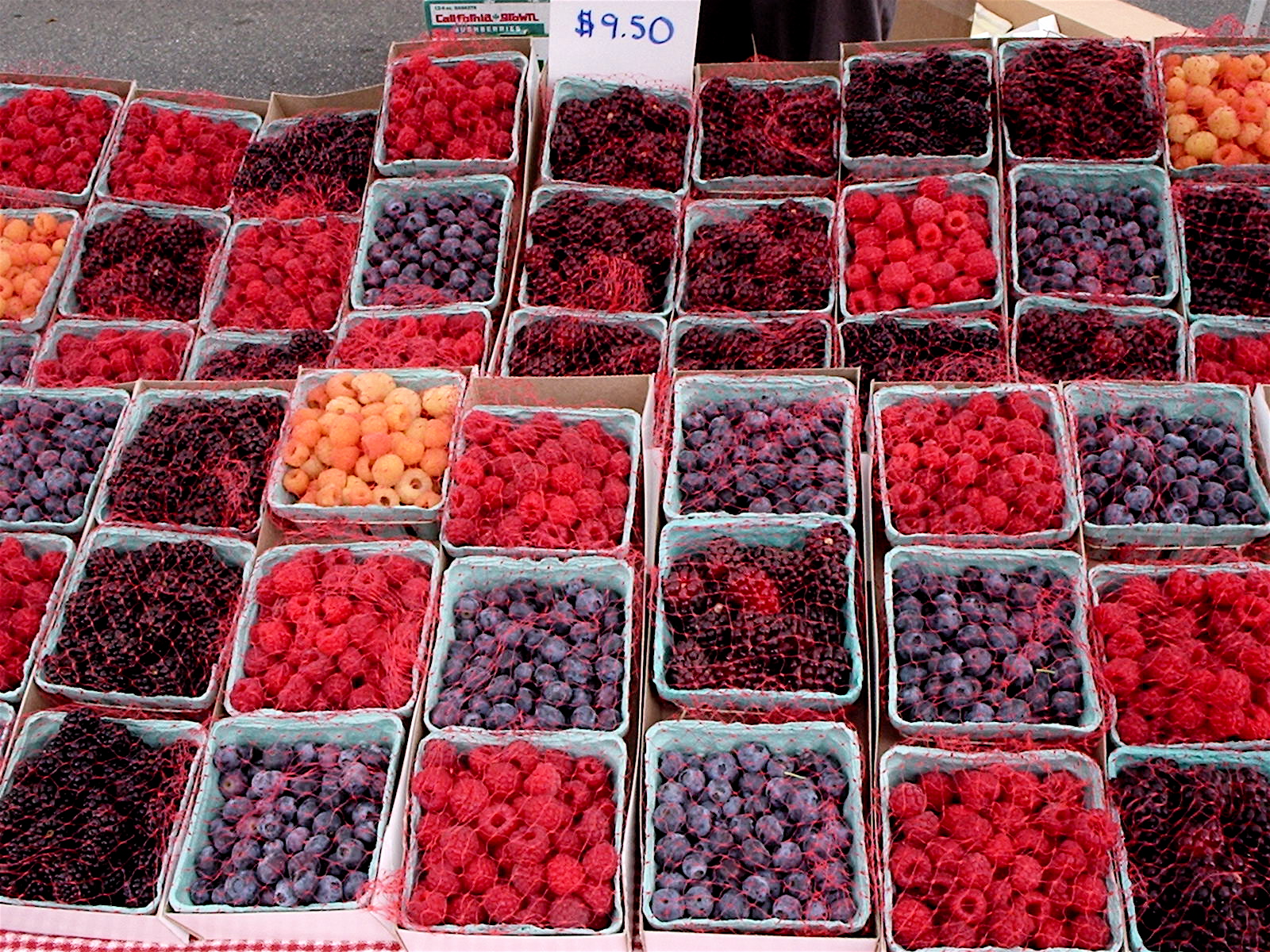|
Phytochemical
Phytochemicals are naturally-occurring chemicals present in or extracted from plants. Some phytochemicals are nutrients for the plant, while others are metabolites produced to enhance plant survivability and reproduction. The fields of extracting phytochemicals for manufactured products or applying scientific methods to study phytochemical properties are called ''phytochemistry''. An individual who uses phytochemicals in food chemistry manufacturing or research is a ''phytochemist''. Phytochemicals without a nutrient definition have no confirmed biological activities or proven health benefits when consumed in plant foods. Once phytochemicals in a food enter the digestion process, the fate of individual phytochemicals in the body is unknown due to extensive metabolism of the food in the gastrointestinal tract, producing phytochemical metabolites with different biological properties from those of the parent compound that may have been tested in vitro. Further, the bioavaila ... [...More Info...] [...Related Items...] OR: [Wikipedia] [Google] [Baidu] |
Nutrient
A nutrient is a substance used by an organism to survive, grow and reproduce. The requirement for dietary nutrient intake applies to animals, plants, fungi and protists. Nutrients can be incorporated into cells for metabolic purposes or excreted by cells to create non-cellular structures such as hair, scales, feathers, or exoskeletons. Some nutrients can be metabolically converted into smaller molecules in the process of releasing energy such as for carbohydrates, lipids, proteins and fermentation products ( ethanol or vinegar) leading to end-products of water and carbon dioxide. All organisms require water. Essential nutrients for animals are the energy sources, some of the amino acids that are combined to create proteins, a subset of fatty acids, vitamins and certain minerals. Plants require more diverse minerals absorbed through roots, plus carbon dioxide and oxygen absorbed through leaves. Fungi live on dead or living organic matter and meet nutrient needs from th ... [...More Info...] [...Related Items...] OR: [Wikipedia] [Google] [Baidu] |
Polyphenols
Polyphenols () are a large family of naturally occurring phenols. They are abundant in plants and structurally diverse. Polyphenols include phenolic acids, flavonoids, tannic acid, and ellagitannin, some of which have been used historically as dyes and for tanning garments. Etymology The name derives from the Ancient Greek word (, meaning "many, much") and the word ‘phenol’ which refers to a chemical structure formed by attachment of an aromatic benzenoid (phenyl) ring to a hydroxyl (-OH) group (hence the ''-ol'' suffix). The term "polyphenol" has been in use at least since 1894. Definition Polyphenols are natural products with "one or several hydroxyl groups on aromatic rings", including four principal classes: phenolic acids, flavonoids, stilbenes, and lignans. Flavonoids can be grouped as flavones, flavonols, flavanols, flavanones, isoflavones, proanthocyanidins, and anthocyanins. Particularly abundant flavanoids in foods are catechin (tea, fruits), hespereti ... [...More Info...] [...Related Items...] OR: [Wikipedia] [Google] [Baidu] |
Carotenoids
Carotenoids () are yellow, orange, and red organic compound, organic pigments that are produced by plants and algae, as well as several bacteria, archaea, and Fungus, fungi. Carotenoids give the characteristic color to pumpkins, carrots, parsnips, maize, corn, tomatoes, Domestic Canary, canaries, flamingos, salmon, lobster, shrimp, and daffodils. Over 1,100 identified carotenoids can be further categorized into two classes xanthophylls (which contain oxygen) and carotenes (which are purely hydrocarbons and contain no oxygen). All are derivative (chemistry), derivatives of tetraterpenes, meaning that they are produced from 8 isoprene units and contain 40 carbon atoms. In general, carotenoids absorb wavelengths ranging from 400 to 550 nanometers (violet to green light). This causes the compounds to be deeply colored yellow, orange, or red. Carotenoids are the dominant pigment in autumn leaf coloration of about 15-30% of tree species, but many plant colors, especially reds and purpl ... [...More Info...] [...Related Items...] OR: [Wikipedia] [Google] [Baidu] |
Berries
A berry is a small, pulpy, and often edible fruit. Typically, berries are juicy, rounded, brightly colored, sweet, sour or tart, and do not have a stone fruit, stone or pit (fruit), pit although many wikt:pip#Etymology 2, pips or seeds may be present. Common examples of berries in the culinary sense are strawberries, raspberries, blueberries, blackberries, white currants, blackcurrants, and redcurrants. In Britain, soft fruit is a horticultural term for such fruits. The common usage of the term "berry" is different from the scientific or berry (botany), botanical definition of a berry, which refers to a fleshy fruit produced from the Ovary (botany), ovary of a single flower where the outer layer of the ovary wall develops into an edible fleshy portion(pericarp). The botanical definition includes many fruits that are not commonly known or referred to as berries, such as grapes, tomatoes, cucumbers, eggplants, bananas, and chili peppers. Fruits commonly considered berries but exc ... [...More Info...] [...Related Items...] OR: [Wikipedia] [Google] [Baidu] |
Linus Pauling Institute
The Linus Pauling Institute is a research institute located at the Oregon State University with a focus on health maintenance. The mission statement of the institute is to determine the functional roles of micronutrients and phytochemicals in promoting optimal health and to treat or prevent human disease, and to determine the role of oxidative stress and inflammation in health and disease. There are several major areas of research occurring at the institute, focused on many vitamins, minerals and other compounds found in the diet. The Linus Pauling Institute of Science and Medicine was founded in 1973 in Menlo Park, California by Linus Pauling and several colleagues under the name Institute of Orthomolecular Medicine. In 1974, the institute was renamed the Linus Pauling Institute of Science and Medicine. After Linus Pauling's death, it relocated to Oregon State University in 1996, and was renamed the Linus Pauling Institute. Several researchers from the original institute, inc ... [...More Info...] [...Related Items...] OR: [Wikipedia] [Google] [Baidu] |
Dietary Fiber
Dietary fiber (fibre in English in the Commonwealth of Nations, Commonwealth English) or roughage is the portion of plant-derived food that cannot be completely broken down by human digestive enzymes. Dietary fibers are diverse in chemical composition and can be grouped generally by their solubility, viscosity and Fermentation#Biological role, fermentability which affect how fibers are processed in the body. Dietary fiber has two main subtypes: soluble fiber and insoluble fiber which are components of plant-based foods such as legumes, whole grains, cereals, vegetables, fruits, and nut (fruit), nuts or seeds. A diet high in regular fiber consumption is generally associated with supporting health and lowering the risk of several diseases. Dietary fiber consists of non-starch polysaccharides and other plant components such as cellulose, resistant starch, resistant dextrins, inulins, lignins, chitins, pectins, beta-glucans, and oligosaccharides. Food sources of dietary fiber have ... [...More Info...] [...Related Items...] OR: [Wikipedia] [Google] [Baidu] |
Traditional Medicine
Traditional medicine (also known as indigenous medicine or folk medicine) refers to the knowledge, skills, and practices rooted in the cultural beliefs of various societies, especially Indigenous groups, used for maintaining health and treating illness. In some Asia, Asian and Africa, African countries, up to 80% of people rely on traditional medicine for primary health care. Traditional medicine includes systems like Ayurveda, traditional Chinese medicine, and Unani medicine, Unani. The World Health Organization supports their integration, but warns of potential risks and calls for more research on their safety and effectiveness. The use of medicinal herbs spans over 5,000 years, beginning with ancient civilizations like the Sumer, Sumerians, Ancient Egypt, Egyptians, Indian people, Indians, and Chinese people, Chinese, evolving through Ancient Greece, Greek, Ancient Rome, Roman, Islam, Islamic, and Middle Ages, medieval European traditions, and continuing into Colonial histo ... [...More Info...] [...Related Items...] OR: [Wikipedia] [Google] [Baidu] |
Oregon State University
Oregon State University (OSU) is a Public university, public Land-grant university, land-grant research university in Corvallis, Oregon, United States. OSU offers more than 200 undergraduate degree programs and a variety of graduate and doctoral degrees through all 11 of the university's colleges. It has the seventh-largest engineering college in the nation (2023). Undergraduate enrollment for all colleges combined averages over 32,000 while an additional 5,000 students are engaged in post-graduate coursework through the university. In 2023, over 37,000 students were enrolled at OSU, making it the largest university in the state. Out-of-state students typically make up over one-quarter of the student body. Since its founding, over 272,000 students have graduated from OSU. The university is Carnegie Classification of Institutions of Higher Education, classified among "R1: Doctoral Universities – Very high research activity". Initially chartered as a land-grant university, OS ... [...More Info...] [...Related Items...] OR: [Wikipedia] [Google] [Baidu] |
Extract
An extract (essence) is a substance made by extracting a part of a raw material, often by using a solvent such as ethanol, oil or water. Extracts may be sold as tinctures or absolutes or dried and powdered. The aromatic principles of many spices, nuts, herbs, fruits, etc., and some flowers, are marketed as extracts, among the best known of true extracts being almond, cinnamon, cloves, ginger, lemon, nutmeg, orange, peppermint, pistachio, rose, spearmint, vanilla, violet, rum, and wintergreen. Extraction techniques Most natural essences are obtained by extracting the essential oil from the feedstock, such as blossoms, fruit, and roots, or from intact plants through multiple techniques and methods: * Expression ( juicing, pressing) involves physical extraction material from feedstock, used when the oil is plentiful and easily obtained from materials such as citrus peels, olives, and grapes. * Absorption (steeping, decoction). Extraction is done by soak ... [...More Info...] [...Related Items...] OR: [Wikipedia] [Google] [Baidu] |
University Of California Cooperative Extension
The University of California (UC) is a public land-grant research university system in the U.S. state of California. Headquartered in Oakland, the system is composed of its ten campuses at Berkeley, Davis, Irvine, Los Angeles, Merced, Riverside, San Diego, San Francisco, Santa Barbara, and Santa Cruz, along with numerous research centers and academic centers abroad. The system is the state's land-grant university. In 1900, UC was one of the founders of the Association of American Universities and since the 1970s seven of its campuses, in addition to Berkeley, have been admitted to the association. Berkeley, Davis, Irvine, Los Angeles, Santa Barbara, Santa Cruz, Riverside, and San Diego are considered Public Ivies, making California the state with the most universities in the nation to hold the title. UC campuses have large numbers of distinguished faculty in almost every academic discipline, with UC faculty and researchers having won 71 Nobel Prizes as of 2021. The syst ... [...More Info...] [...Related Items...] OR: [Wikipedia] [Google] [Baidu] |
Plant
Plants are the eukaryotes that form the Kingdom (biology), kingdom Plantae; they are predominantly Photosynthesis, photosynthetic. This means that they obtain their energy from sunlight, using chloroplasts derived from endosymbiosis with cyanobacteria to produce sugars from carbon dioxide and water, using the green pigment chlorophyll. Exceptions are parasitic plants that have lost the genes for chlorophyll and photosynthesis, and obtain their energy from other plants or fungi. Most plants are multicellular organism, multicellular, except for some green algae. Historically, as in Aristotle's biology, the plant kingdom encompassed all living things that were not animals, and included algae and fungi. Definitions have narrowed since then; current definitions exclude fungi and some of the algae. By the definition used in this article, plants form the clade Viridiplantae (green plants), which consists of the green algae and the embryophytes or land plants (hornworts, liverworts ... [...More Info...] [...Related Items...] OR: [Wikipedia] [Google] [Baidu] |



